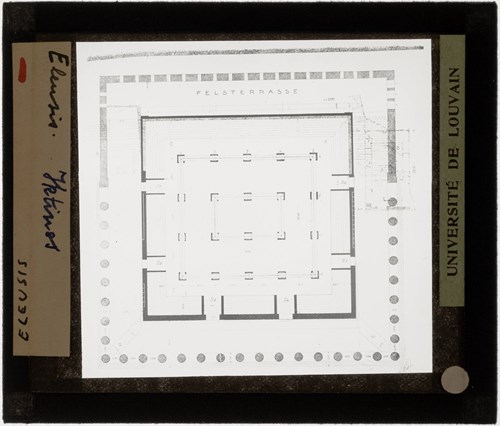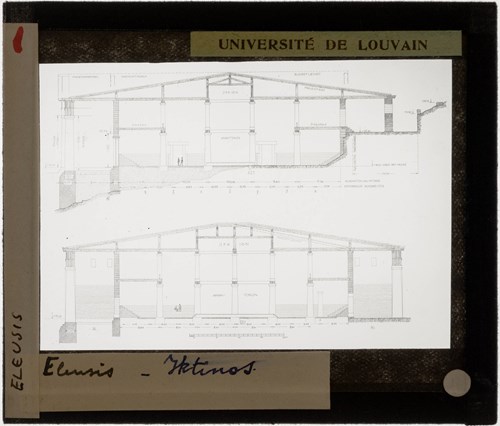The performance of the Mysteries
The celebration of the Mysteries culminated on the night of the 20th of Boedromion with a series of experiences at the Telesterion. We know almost nothing about the form and content of the events that marked the initiation of the faithful and the revelation of the eternal truth that Demeter taught to the people. The architectural plan of the Telesterion determines (to some extent) the spatial arrangement of the mystai and the priests. The temple is square and divided into seating areas for the mystai and the Anaktoron that housed the cult’s sacred objects. The interior, however, was not an open space. The columns designed to support the roof created significant practical challenges to the organisation and presentation of the ceremony. The Telesterion could accommodate three or four thousand mystai. Still, there had to be space for the priests and their assistants who helped the hierophant in the revelation of the Mysteries. The columns significantly reduced visibility, so it must be considered inevitable that many of those present would not have a clear field of vision in all phases of the ceremony. There is also doubt whether the temple could accommodate all the mystai, especially in years when there was increased public interest in participating.

Sanctuary of Telesterion: Plan, ca. 1910-1930, photograph, Catholic University of Leuven © KU Leuven

Sanctuary of Telesterion: Architectural Drawing, ca. 1910-1930, photograph, Catholic University of Leuven © KU Leuven






